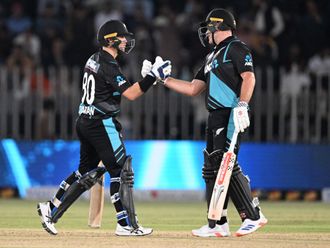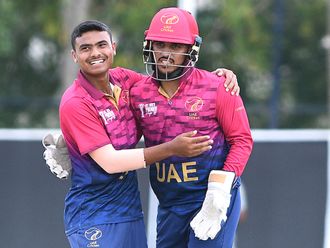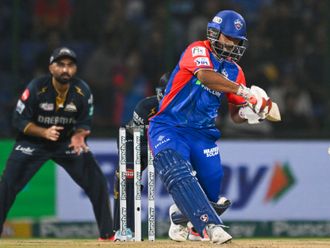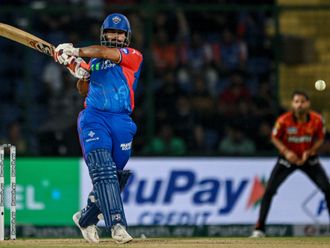It’s question that’s often asked and debated these days: Does Twenty20 have a future?
Although it’s a popular, money-spinning format, it’s a concept fans of the game struggle to fully embrace — and we aren’t talking only about the purists.
The format was introduced in 2003 by the England and Wales Cricket Board for an inter-county competition. At the time most people were sceptical it would last. Even when it began to get popular later on, many believed it had only a short life.
No one expected the format to be used for international contests, and that there would even be a World Cup!
Many called it entertainment cricket, and for some cricketers it was only fun cricket.
Limited overs
One of the big criticisms against cricket in general in the past has been the game’s length.
Test cricket is often seen as absolutely strange; how can there be no result in a sport, sometimes even after playing for five days?
This also resulted in cricket fans being labelled fools. Limited-over cricket emerged to counter this — and to prove that cricket can always produce a result.
Although it became popular when England’s county team played it in 1962, the origin of the limited-over format goes back to the southern Indian state of Kerala.
In 1951, the All India Pooja cricket tournament in the town of Thrippunithura was played to 50 overs.
Many critics then also carped that when most popular sports are finished in around two hours, to spend a whole day watching cricket was just not worth it.
In a world where everything happens instantly, and for a generation that expects quick results, T20 cricket was the answer.
Although cricketers and ardent fans found it difficult to accept, the fans lapped up the format.
Opposition to change is natural.
Test cricket followers could never accept one-day international (ODI) cricket when it was introduced.
When night cricket was launched, many called it pyjama cricket. Today, all ODI matches are played in coloured clothing, as is T20 cricket.
The underlining purposes are to entertain, make cricket colourful and also cater to people’s tastes.
The other good is that the game’s administrators accepted these changes without holding firmly to traditions. They left it to the people to decide what they wanted, and hardcore Test cricket fans were free to watch only that.
When professional T20 came into being, India was one among the few nations to oppose the format; but it is now in India that the format is hugely popular through the Indian Premier League.
In the first T20 World Cup in 2007, India played very reluctantly but went on to win, beating Pakistan in the final.
That was the biggest boost for this format.
A nation with the maximum television eyeballs loved and accepted it.
What fans want
Acceptance from fans is ultimately about boosting the game’s bottom line.
Years ago, sport was played for the pleasure of playing the game, and people watched it for sheer enjoyment.
Today sport is a business, and both organisers and players look to benefit monetarily.
When something generates revenue, it is soon accepted by everyone.
From national cricket boards to the ICC, officials everywhere have embraced the money-spinning potential of the T20 format.
It draws crowds at almost every venue, and people are willing to follow it on television as well.
As a result, the sponsors have come flocking.
Other formats have not suffered though.
The last two 50-over World Cups, in India and Australia, were huge successes. Test series such as the Ashes still attract full houses.
“The success of Twenty20 cricket is that it coexists along with Test and ODIs,” David Richardson, Chief Executive of the ICC, told Gulf News last year.
“We will use this format to globalise the game.”
T20 has helped cricket compete with other shorter-form sports such as football and hockey.
In fact, the format is the main reason cricket is being considered as an Olympic sport, since matches can be held within the duration of the Games.
Different ball game
However, there are downsides — particularly in the way the game is played.
Many pundits fear that regular use of the format may deter players from getting their
basics right.
The short format and quick money T20 brings in is increasingly seeing it being used for game-strengthening domestic tournaments.
The real harm is done when school tournaments are also played in this format.
To be successful in any game, a player must get the basics right. For a batsman, this is possible only in longer versions.
A bowler looking to test his mettle must not only practice during nets but also try it out during matches.
T20 gives a bowler only four overs, a span too short to get match practice irrespective of the number of matches played.
This is why the five-day game is often seen as the real test of a cricketer. It tests not only a cricketer’s endurance to stay at the wicket but also his ability to go the distance.
The late Bob Woolmer, a renowned coach, once told Gulf News: “You can play any shot in cricket only after you master the stroke you want to play. And to master a stroke you have to spend time at the crease for long hours.
"In T20 you are always looking for boundaries and sixes; and you can do that only after mastering how to hit them.”
Any top Twenty20 player will accept Woolmer’s viewpoint.
Innovative shots like the scoop and square cuts for sixes have emerged only after one has been able to measure the line and length of delivery.
But Test cricket has benefited from T20.
Most batsmen now play both formats, and many have taken their most innovative shots to the longer game, resulting in bigger scores each day.
Consequently, Test cricket is now faster and more attractive to watch.
Similarly, in one-day cricket, scores of more than 300 runs are now regular mainly due to batsmen implementing some of the T20 shots, especially during the last overs.
Some even play ODI cricket like a Twenty20 match.
For now the Twenty20 format is popular, but no one knows whether there will be a further shrink.
Some have started playing ten-over matches as well.
In a fast-paced world, you can never predict the next version and whether the Ten10 format, too, turns popular.
But for now, cricket is enjoying the benefits of T20, luring more fans into the game.













